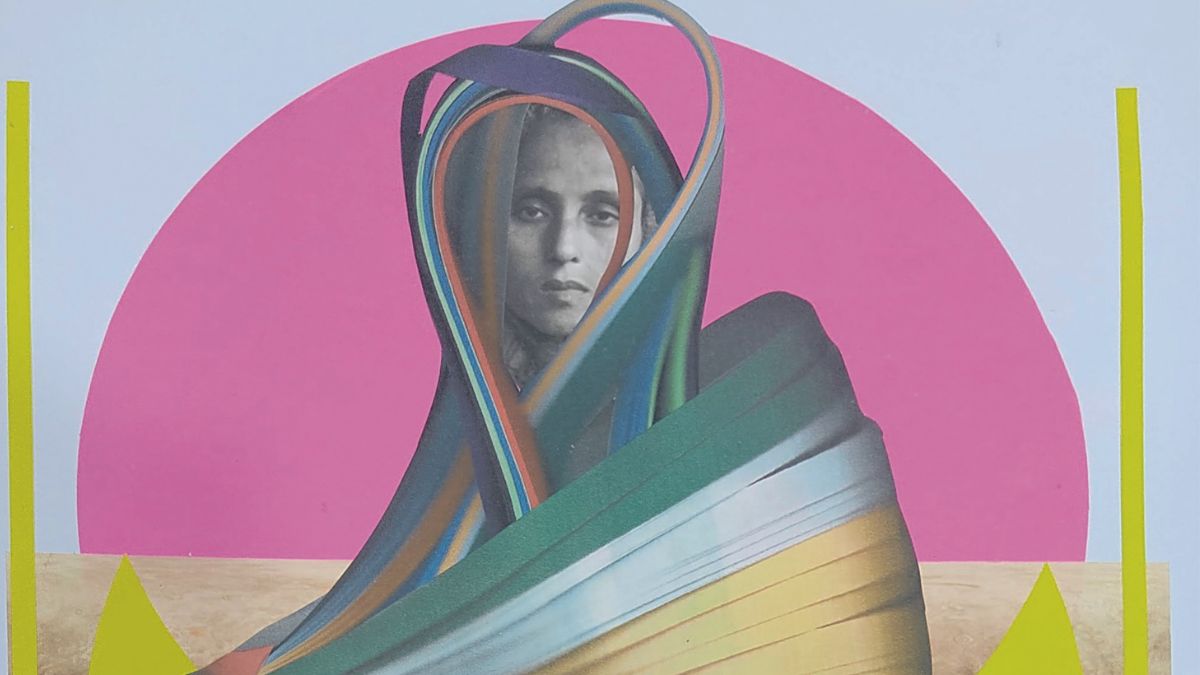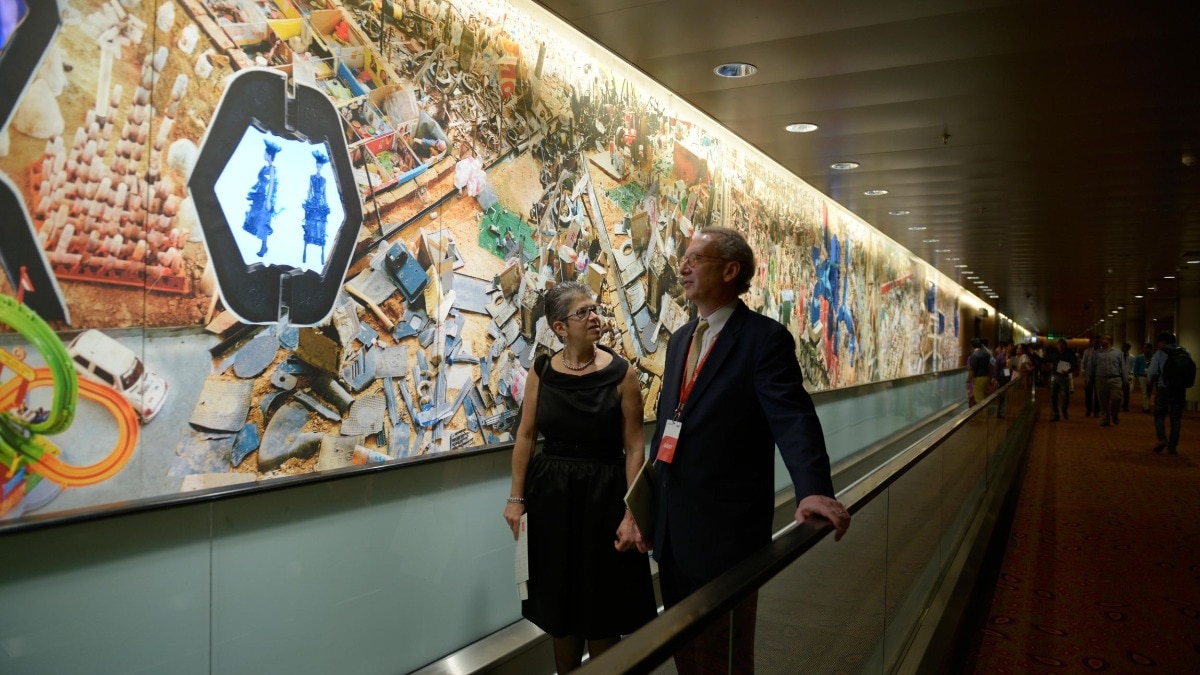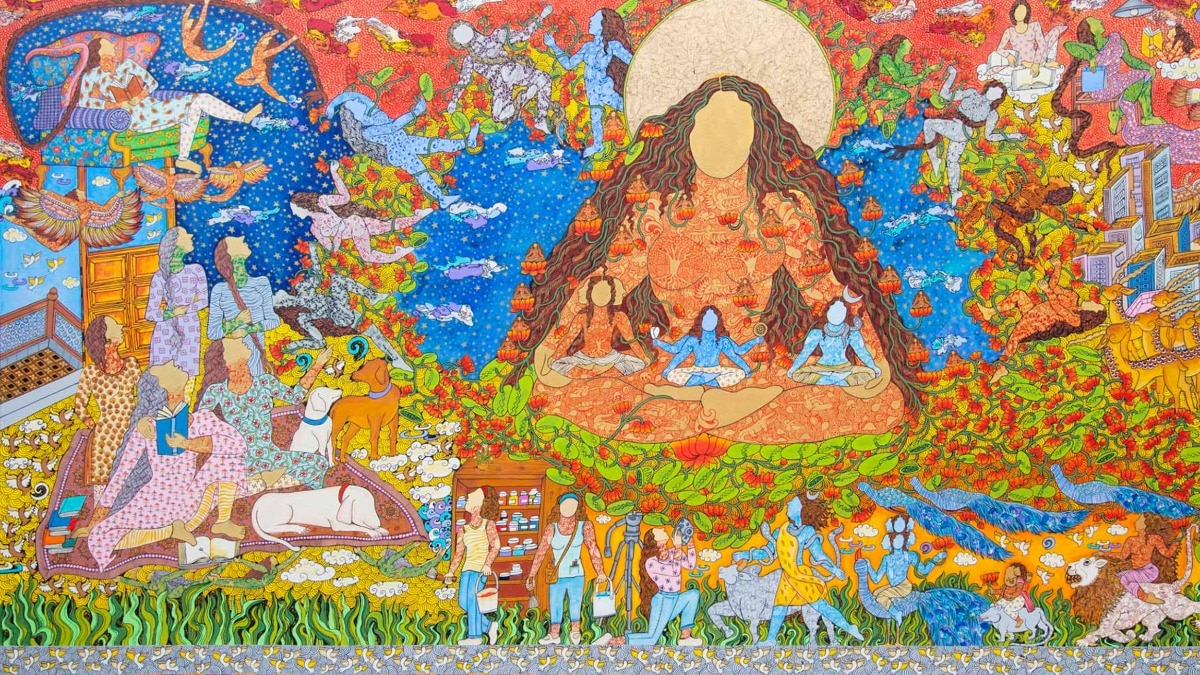Raptures in life and death—Dhruv Bandil and his inspiration from Moreno, Madhya Pradesh
The designer creates arresting pieces that reflect on widows and their spiritual liberation.


In the district of Moreno, a small town in Madhya Pradesh, fashion designer Dhruv Bandil has been harbouring big dreams. For with the help of deadstock, salvaged textiles, and a remarkable level of creativity, Dhruv has been creating saris, skirts, and tops that blur the lines between the sublime and style.
“I’ve admired self-expression in small but wellthought-out forms since I was a child growing up in Morena,” Dhruv tells Bazaar India, when asked about the beginnings of his journey. “The way women drape their saris, the clothing in local tableaux, the way my mother used to put a black dot beneath her bindi, and the sculptures at temples have all been, and continue to be, a significant part of my creative consciousness. These recollections, I feel, are at the heart of my profession...”

At the core of his current collection, Threshold of Vrindavan Widows, is an important message about humanity, the conditions of widows, and spirituality. “I spent a lot of time with my family in Vrindavan, where widows from across the country seek refuge. Abandoned by their own families, they come to Vrindavan in search of tranquilly. They await death in order to be united with the Almighty. Through this collection, I aim to convey the moment of their union, the threshold for which they live, their ultimate bliss is death, which liberates them from their earthly body and ushers them into a tidal surge of celestial energy,” says the 26-year-old.
The pieces of this range showcase long, folded pleats and knots that frame the body as if an embrace from nature, or a higher power. The most beautiful part is that the colours are not muted—far from it, there are hues like neon green, vivid orange, and blue, among the medley of shades.

Dhruv’s creative process is more an energetic exchange with the material than a planned or drafted approach. As the designer explains, various craft components are studied to make the textiles. “To get the desired outcomes, I examine the craft aspects, dismantle them, and then incorporate them into the garment structure. Surfaces are created using techniques such as heat rolling, printing, pressured steam, and so forth. And most of these treatments are done in my home town Morena and across DelhiNCR,” he reveals. With each piece going through several toiles first, and surface details designed particularly for each garment, the ensembles take about 15 to 20 days to complete. “I’ve procured materials from rejected samples, closed-down clothing production plants, and retail deadstock. I strive to utilise fresh materials as little as possible, although I do use them when absolutely required,” he shares.
Naturally, when most people encounter Dhruv’s works, there is a certain sense of surprise. “I’ve noticed that their initial emotion of astonishment quickly turns to a state of Zen once they have a greater understanding of the ideology behind the work, Dhruv says, who will soon be pursuing a Master’s Degree at Central Saint Martins in London. Until then, his pieces can be bought via his Instagram handle.










